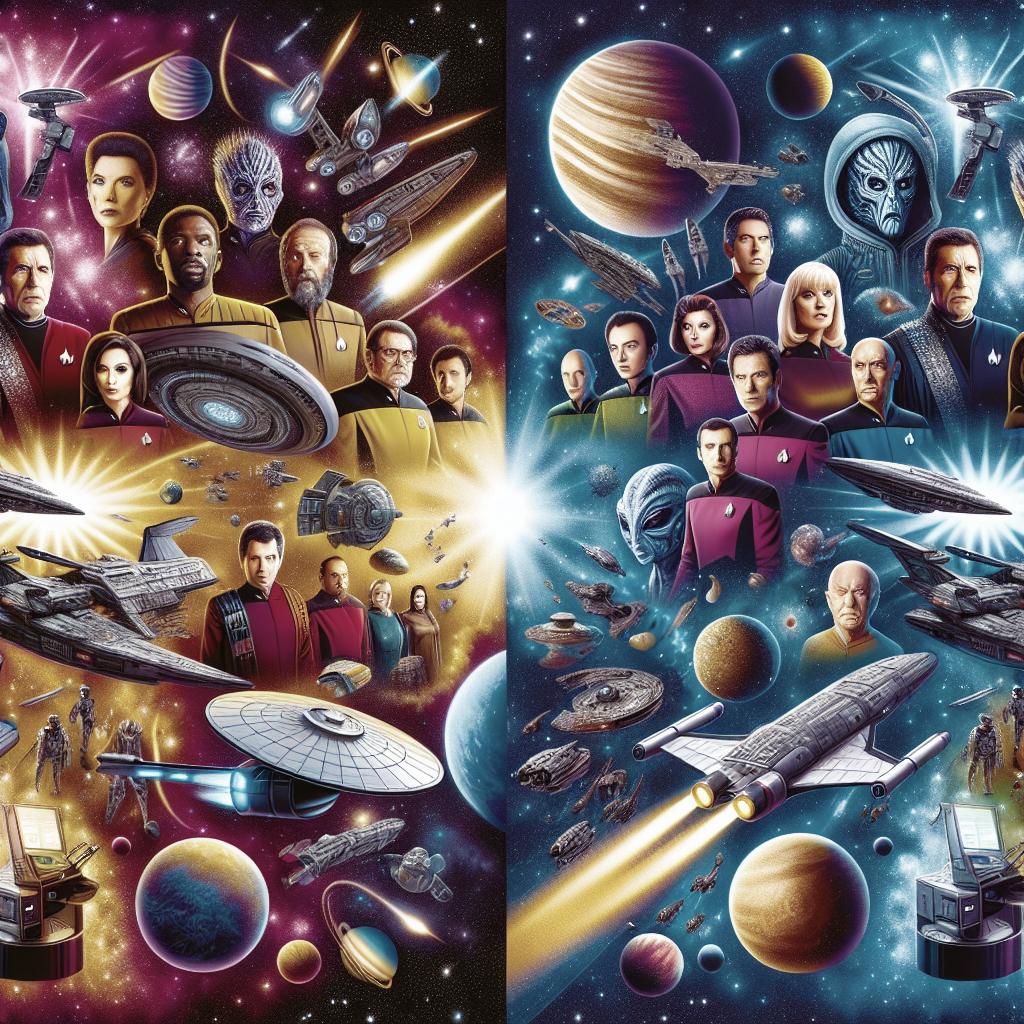“`html
Understanding Star Trek Timeline
The Star Trek universe is a rich tapestry of interconnected stories, each contributing to a wide-ranging narrative that has spanned decades. From its original inception in the 1960s to the contemporary adaptations, Star Trek has crafted a unique timeline that intrigues fans old and new. In this blog post, we will delve into the complexities of the Star Trek timelines, focusing primarily on the Prime Timeline and the Kelvin Timeline. We will explore their origins, developments, and the impact each has had on the broader Star Trek universe. An understanding of these timelines will not only enhance your enjoyment of the franchise but will also provide a roadmap to navigate its vast content. Join us in this adventure through star dates and alternate realities as we journey through one of science fiction’s most iconic series.
Star Trek Timeline
The Star Trek timeline is a sprawling sequence of events central to one of the most expansive science fiction universes. This timeline, spanning centuries, narrates humanity’s ventures into space, the establishment of the United Federation of Planets, and the diverse interstellar interactions that follow. The timeline is an intricate web of series, movies, and spin-offs, each contributing uniquely to the Star Trek mythos.
The timeline can be divided into various epochs, each with distinctive narratives and character arcs. Starting with the 22nd-century series “Star Trek: Enterprise” that depicts early space exploration, the timeline progresses through the classic “Star Trek: The Original Series,” further expanding through “The Next Generation,” “Deep Space Nine,” “Voyager,” and the recent “Discovery” and “Picard.” Each series not only adds depth to its respective era but also intertwines with the others, creating a holistic universe that fans continue to dissect and discuss.
The Prime Star Trek Timeline
The Prime Timeline is the original continuity within the Star Trek universe and encompasses most series and films released between 1966 and the early 2000s. This timeline begins with “Star Trek: Enterprise” and extends through to “Star Trek: Picard.” It is characterized by its adherence to established canon and introduces iconic elements such as the Vulcan salutation and the Klingon-Federation conflicts.
This timeline was groundbreaking in its ability to address contemporary societal issues through its allegorical storytelling. Major events within the Prime Timeline include the formation of the Federation, the Dominion War, and various temporal anomalies explored in episodes across series. The Prime Timeline serves as the bedrock of Star Trek lore, influencing not only its direct follow-ups but various media and literature spinoffs as well.
The Kelvin Star Trek Timeline
The Kelvin Timeline was established with J.J. Abrams’ 2009 reboot film, “Star Trek,” which introduced an alternate universe. This timeline begins with a significant alteration to continuity when the USS Kelvin encounters a temporal disturbance and is destroyed by a Romulan mining vessel from the future. This event sets off a chain of actions different from the Prime Timeline, creating new narratives for familiar characters such as Kirk, Spock, and more.
The Kelvin Timeline is defined by its modern aesthetic, fast-paced storytelling, and fresh takes on classic characters. This universe’s films, including “Star Trek Into Darkness” and “Star Trek Beyond,” have introduced Star Trek to a new generation of fans while also offering fresh insights into beloved archetypes and relationships. Despite existing divergently, the Kelvin Timeline pays homage to its origins, maintaining thematic ties to key Star Trek philosophies while exploring uncharted storytelling possibilities.
Sign up to the SFX Newsletter
Stay up to date with the latest news, exclusive content, and special offers from the world of sci-fi and fantasy by signing up to the SFX Newsletter. Whether you’re a longtime fan or new to the Star Trek universe, our newsletter will provide you with insights, reviews, and fresh perspectives.
Summary
The Star Trek timelines offer a rich exploration into science fiction storytelling, with distinctive narratives that continue to capture imaginations worldwide. The Prime Timeline remains a fan favorite with its comprehensive continuity, while the Kelvin Timeline brings modern reinterpretations to classic concepts. Each timeline provides unique contributions to the ever-evolving tapestry of Star Trek, challenging our perceptions of time, space, and identity.
Trending Now
Discover the latest developments in the Star Trek universe, from new series announcements to in-depth reviews of recent episodes and films. Engage with discussions on upcoming projects, the impact of Star Trek’s narratives in contemporary times, and exciting crossover theories that have fans buzzing.
Related
Expand your knowledge of the Star Trek universe with related content, including character analyses, interviews with creators, and behind-the-scenes looks at the making of the series and films. Delve into extended universe novels, games, and fan-fiction that enrich the lore and community surrounding Star Trek.
Final Thoughts
The Star Trek timelines remind us of the boundless possibilities within storytelling, showcasing how narratives can evolve and expand whilst maintaining a connection to their roots. Whether through the canonical Prime Timeline or the alternate Kelvin Timeline, the essence of Star Trek persists, inviting audiences to explore the final frontier in myriad forms.
| Timeline | Characteristics | Key Elements |
|---|---|---|
| Prime Star Trek Timeline | Original continuity, expansive lore | Formation of the Federation, Dominion War |
| Kelvin Star Trek Timeline | Alternate universe, modern reimagination | Alternate narrative paths, homage to classics |
“`


